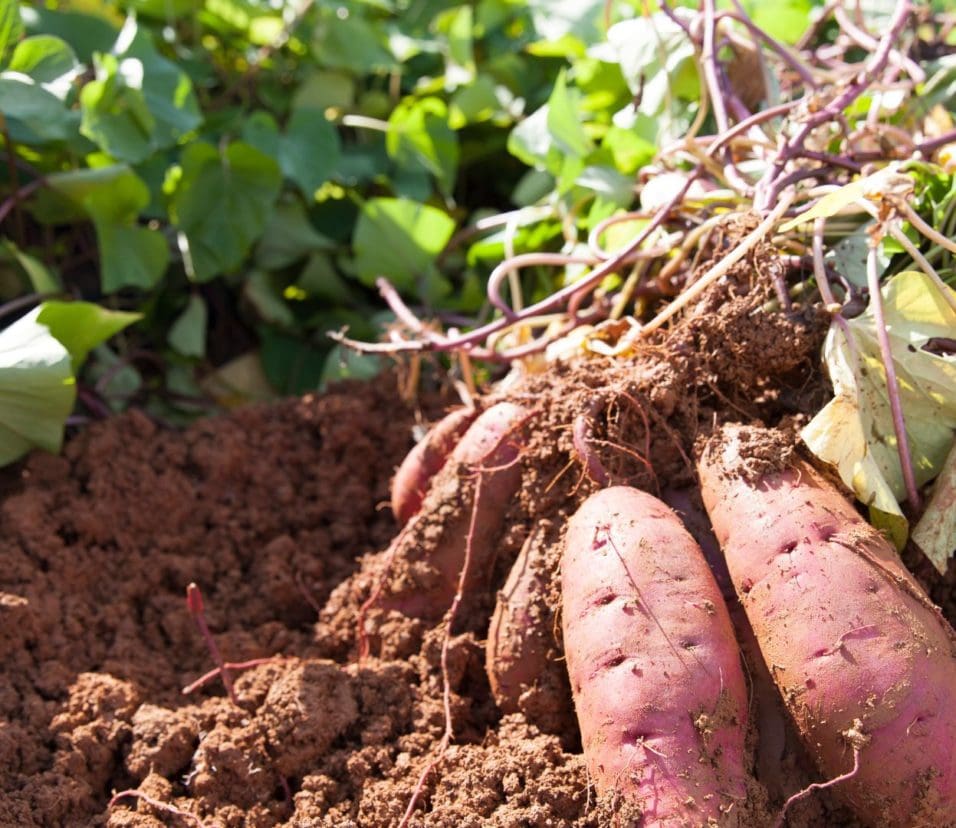Preparing Food
Top 10 Healthiest Foods to Grow! (Part 3)
Easy Ways to Grow Your Own Superfoods
Greetings, everyone! Welcome back to our enlightening series on cultivating your own superfoods in the vibrant Caribbean. In Part 2, we unveiled two more incredible superfoods and provided you with simple methods to grow them successfully. Now, in Part 3, get ready to be amazed as we introduce three additional powerhouse foods. Prepare to be further astounded by the wonders of nature’s bounty in the region. Let’s dive right in!
- GINGER:
- Choose quality ginger rhizomes: Select fresh, organic ginger rhizomes from a reputable source. Look for rhizomes that are plump, firm, and have visible buds or “eyes.”
- Prepare a suitable planting area: Ginger thrives in well-draining soil with rich organic matter. Choose a planting area that receives partial shade or filtered sunlight. Amend the soil by adding compost, well-rotted manure, or coconut coir to improve fertility and drainage.
- Plant the rhizomes: Cut the ginger rhizomes into smaller pieces, each with a few visible buds. Plant the rhizome pieces about 2 to 3 inches deep, with the buds facing upward. Space them approximately 6 to 8 inches apart. If planting in containers, use a wide pot that allows room for the rhizomes to spread.
- Water regularly: Keep the soil consistently moist but not waterlogged. Ginger requires regular watering, especially during dry periods. Water deeply and thoroughly, ensuring the soil remains evenly moist throughout the growing season.
- Mulch to retain moisture: Apply a layer of organic mulch, such as straw or dried leaves, around the ginger plants. Mulching helps retain moisture, suppress weed growth, and regulate soil temperature, which is especially beneficial in the Caribbean’s warm climate.
- Provide occasional feeding: Ginger plants benefit from occasional organic fertilisation. Apply a balanced organic fertiliser or compost every few weeks during the growing season to provide essential nutrients.
- Control pests naturally: Monitor your ginger plants for common pests like aphids, mites, or snails. Remove any pests you find manually or create a homemade spray by blending garlic cloves or chilli peppers with water. Strain the mixture and spray it on the ginger plants to deter pests. Encourage beneficial insects like ladybugs and lacewings to naturally control pest populations.
- Harvest when mature: Ginger can be harvested when the leaves start to turn yellow and die back. Carefully dig up the rhizomes using a garden fork or trowel. Take what you need and replant any remaining rhizomes for future growth.
- ONIONS:
- Choose the right onion variety: Consider onion varieties that have a shorter maturation time and are adapted to warmer temperatures.
- Prepare the soil: Onions thrive in well-draining soil with good fertility. Prepare the planting area by loosening the soil and removing any weeds or debris. Incorporate organic matter like compost or well-rotted manure to improve soil structure and nutrient content.
- Sow the seeds or sets: Onion seeds can be sown directly into the soil or you can use onion sets, which are small, partially grown onions. Plant the seeds or sets about half an inch deep and space them according to the variety’s recommended spacing, typically 4 to 6 inches apart.
- Water regularly: Onions require consistent moisture for proper bulb development. Water the plants regularly, keeping the soil evenly moist. Avoid overwatering, as excessive moisture can lead to rotting. Consider using drip irrigation or watering at the base of the plants to minimise leaf wetness and reduce the risk of fungal diseases.
- Organic weed control: Keep the onion bed weed-free to minimise competition for nutrients and water. Regularly remove any weeds that emerge, using hand-weeding techniques or organic mulch to suppress weed growth.
- Organic fertilisation: Use organic fertilisers or compost to provide the necessary nutrients. Apply a balanced organic fertiliser or incorporate compost into the soil before planting. Side-dress with additional organic fertilisers during the growing season as needed.
- Pest control: Monitor for common onion pests like onion maggots or thrips. Use organic pest control methods like floating row covers, insecticidal soaps, or neem oil to manage pest populations. Introduce beneficial insects like ladybugs or parasitic wasps to control pests naturally.
- Harvesting: Onions are ready for harvest when the tops have fallen over and dried. Carefully loosen the soil around the bulbs and lift them out. Allow the harvested onions to cure in a cool, dry, and well-ventilated area for a few weeks before storing or using.
- BEETS:
- Choose the right variety: Select beet varieties that are heat-tolerant and have shorter maturation times.
- Prepare the soil: Prepare the planting area by loosening the soil and removing any weeds or debris. Incorporate compost or well-rotted manure into the soil to improve fertility and moisture retention.
- Sow the seeds: Plant beet seeds directly into the prepared soil. Sow the seeds about half an inch deep and space them according to the spacing recommendations on the seed packet, typically 2 to 4 inches apart. Consider planting in rows for easier maintenance.
- Provide consistent moisture: Keep the soil evenly moist by watering regularly, especially during dry spells. Avoid overwatering, as it can lead to rotting. Consider using mulch to help retain soil moisture.
- Organic weed control: Keep the area around the beet plants free from weeds. Regularly remove any weeds that compete for nutrients and space. Use organic mulch or hand-weeding techniques to prevent weed growth.
- Thin the seedlings: Once the beet seedlings have emerged and grown a few inches tall, thin them to allow sufficient space for proper root development. Remove weaker seedlings, leaving the strongest ones spaced according to the variety’s recommended spacing.
- Organic fertilisation: Beets generally don’t require heavy fertilisation if the soil is adequately prepared. However, you can supplement with organic fertilisers or compost during the growing season to provide additional nutrients.
- Pest control: Employ row covers for physical protection, companion planting with pest-repelling plants, and organic insecticidal soaps for soft-bodied insects. Handpick visible pests and practise good garden hygiene. Consider using neem oil as an organic insecticide. Implement crop rotation, mulching, and also attract beneficial insects.
- Harvesting: Beets are typically ready for harvest in 8 to 10 weeks, depending on the variety. Harvest when the beets have reached the desired size, usually around 1 to 2 inches in diameter. Gently loosen the soil around the beet and lift it out, taking care not to damage the root.
Tune in for Part 4, as we explore the remaining top 10 healthiest superfoods in the Caribbean and how easiest to grow them the organic way.







